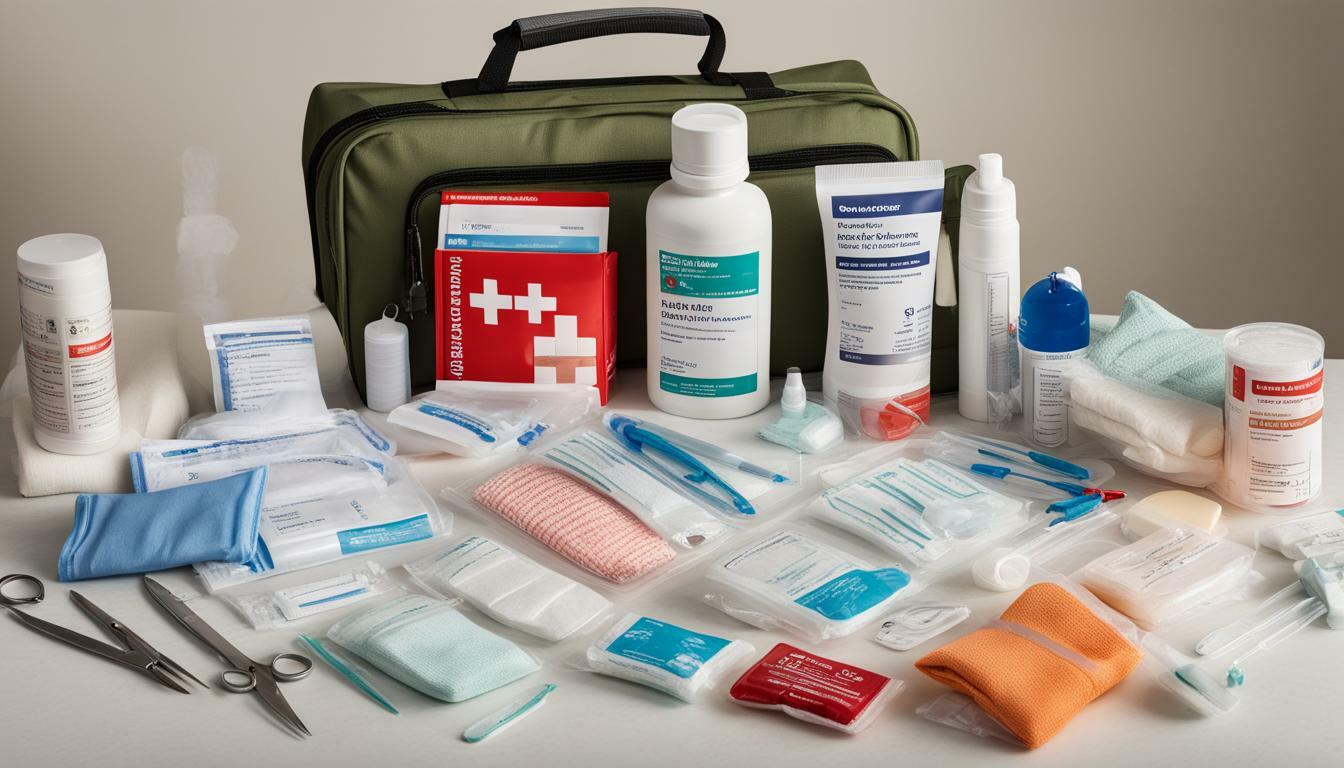As our loved ones age, their health and safety become a primary concern. In case of emergencies, having a well-equipped first aid kit can be invaluable in ensuring their wellbeing. In this section, we will discuss the essential items that should be included in a first aid kit for seniors, promoting elderly safety and peace of mind for both seniors and their caregivers.
Key Takeaways:
- Creating a first aid kit for seniors can promote their safety and wellbeing in case of emergencies.
- The kit should include essential items for common medical situations and emergencies.
- By having a personalized and well-stocked first aid kit, seniors and caregivers can have peace of mind and be prepared for any situation.
The Importance of Senior Safety Precautions
As we age, our bodies become more fragile, and we become more susceptible to accidents and injuries. Therefore, it is vital to take appropriate safety precautions to ensure the wellbeing of seniors. Elderly safety is a significant concern for families, caregivers, and healthcare professionals alike, and there are several ways to promote it.
The Benefits of Senior Safety Precautions
Implementing safety measures for seniors can lead to several benefits, including:
- Reduction in the risk of falls, which is a leading cause of injuries among seniors
- Prevention of burns, cuts, and bruises in the home environment
- Identification and management of health conditions that may increase the risk of accidents
- Improved mental and emotional health due to living in a secure and safe environment
Common Senior Safety Precautions
There are several safety precautions that seniors and their caregivers can take to reduce the risk of accidents and injuries. Some of these precautions include:
| Precaution | Description |
|---|---|
| Ensure adequate lighting | Well-lit living spaces can help prevent falls and other accidents. |
| Install grab bars in the bathroom | Grab bars can provide additional support when getting in and out of the shower or toilet. |
| Regular exercise | Exercise can help improve balance, coordination, and overall physical health. |
| Wear appropriate footwear | Comfortable and supportive footwear can help prevent slips, trips, and falls. |
In addition to these precautions, it is essential to have a first aid kit with the necessary supplies readily available. The kit should include items such as bandages, antiseptic wipes, and other essential first aid supplies. This will ensure that seniors are adequately prepared for emergencies that may occur.
Overall, taking appropriate senior safety precautions is crucial for promoting elderly safety. By implementing these measures, seniors can maintain their independence and quality of life while remaining safe and secure.
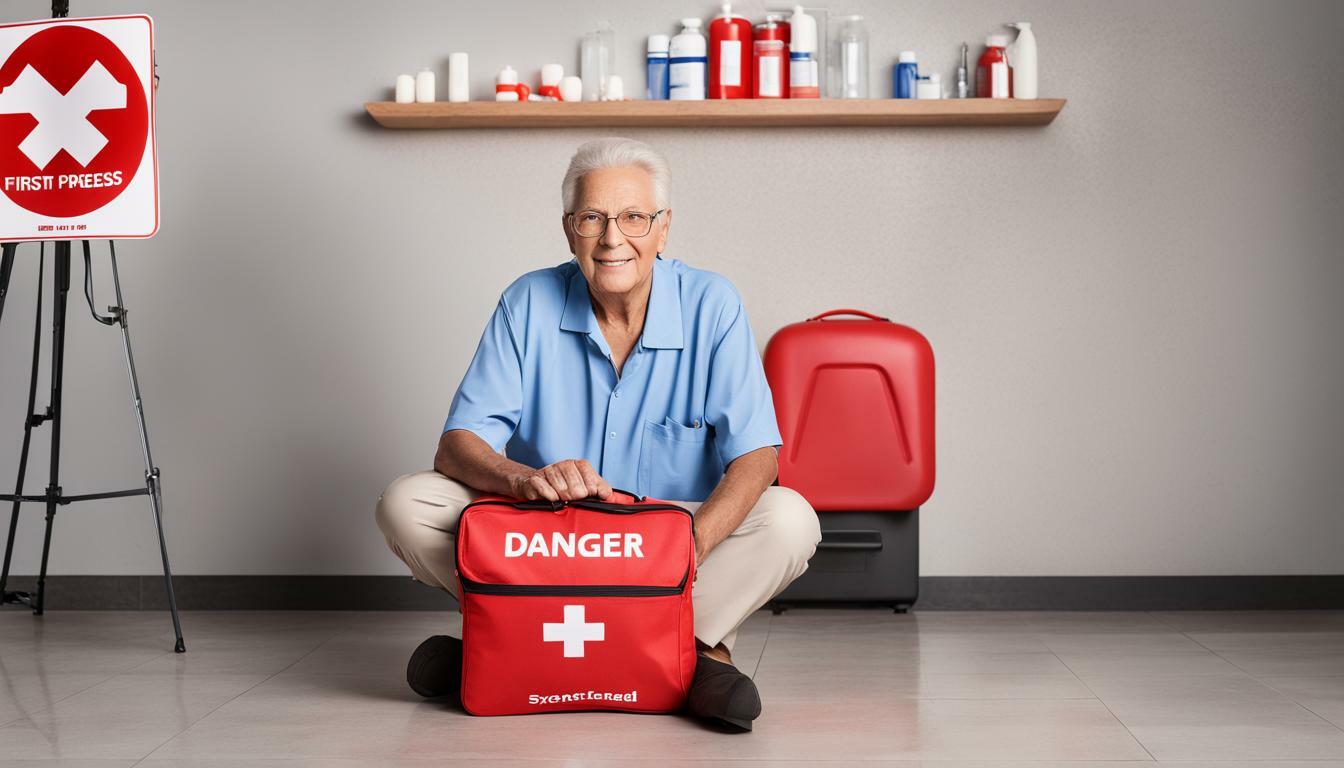
Essential First Aid Supplies for Seniors
A well-stocked first aid kit is essential in any household, but it’s especially important for seniors who may experience medical emergencies more frequently. Here are some elderly first aid supplies to include in a senior’s first aid kit to ensure senior emergency preparedness:
| Item | Purpose |
|---|---|
| Adhesive bandages | To cover and protect small wounds and cuts |
| Sterile gauze pads | To clean and dress larger wounds and cuts |
| Antiseptic wipes | To clean and disinfect wounds |
| Disposable gloves | To protect the caregiver from coming into contact with bodily fluids or blood |
| Scissors | To cut gauze, tape, and clothing if necessary |
| Tweezers | To remove splinters, ticks, and other foreign objects from the skin |
| Eye drops | To soothe dry or irritated eyes |
| Instant cold pack | To reduce swelling and pain from injuries |
| Thermometer | To monitor body temperature |
| Emergency blanket | To keep seniors warm in case of a power outage or other emergency |
| Prescription medications | To address any specific medical conditions or illnesses |
It’s important to keep in mind that seniors may have special medical needs that require specific first aid supplies. For example, seniors with diabetes should include extra insulin and blood glucose test strips in their first aid kit. It’s essential to regularly update and maintain the kit to ensure that all necessary items are available in case of an emergency.

Senior Safety Tips for Everyday Living
As we age, it’s important to take extra precautions to ensure our safety at home and in public. With a few simple safety measures in place, we can reduce the risk of accidents and injuries. Here are some senior safety tips to promote elderly safety:
- Keep pathways clear: Be sure to remove any clutter or obstacles from walkways to prevent tripping hazards.
- Install grab bars: Adding grab bars in the bathroom and staircase can provide additional stability and support.
- Use non-slip mats: Place non-slip mats in the shower and bathtub to avoid slips and falls.
- Improve lighting: Ensure all areas of the home are well-lit to avoid any tripping hazards or obstacles that may be difficult to see.
- Wear appropriate footwear: Seniors should wear supportive, comfortable shoes with good grip to prevent falls.
- Use mobility aids: For seniors with mobility issues, using mobility aids such as canes, walkers, or wheelchairs can help prevent falls.
- Keep emergency numbers handy: Have a list of emergency contact numbers easily accessible in case of an emergency.
- Don’t rush: Seniors should take their time when walking or completing tasks to avoid accidents caused by rushing.
- Stay active: Regular exercise and physical activity can improve strength, balance, and overall health, reducing the risk of falls and injuries.
- Keep a cellphone on hand: Having a cellphone in case of an emergency can help seniors quickly call for help.
By following these senior safety tips, we can promote a safer environment for our elderly loved ones and help them maintain their independence and wellbeing.
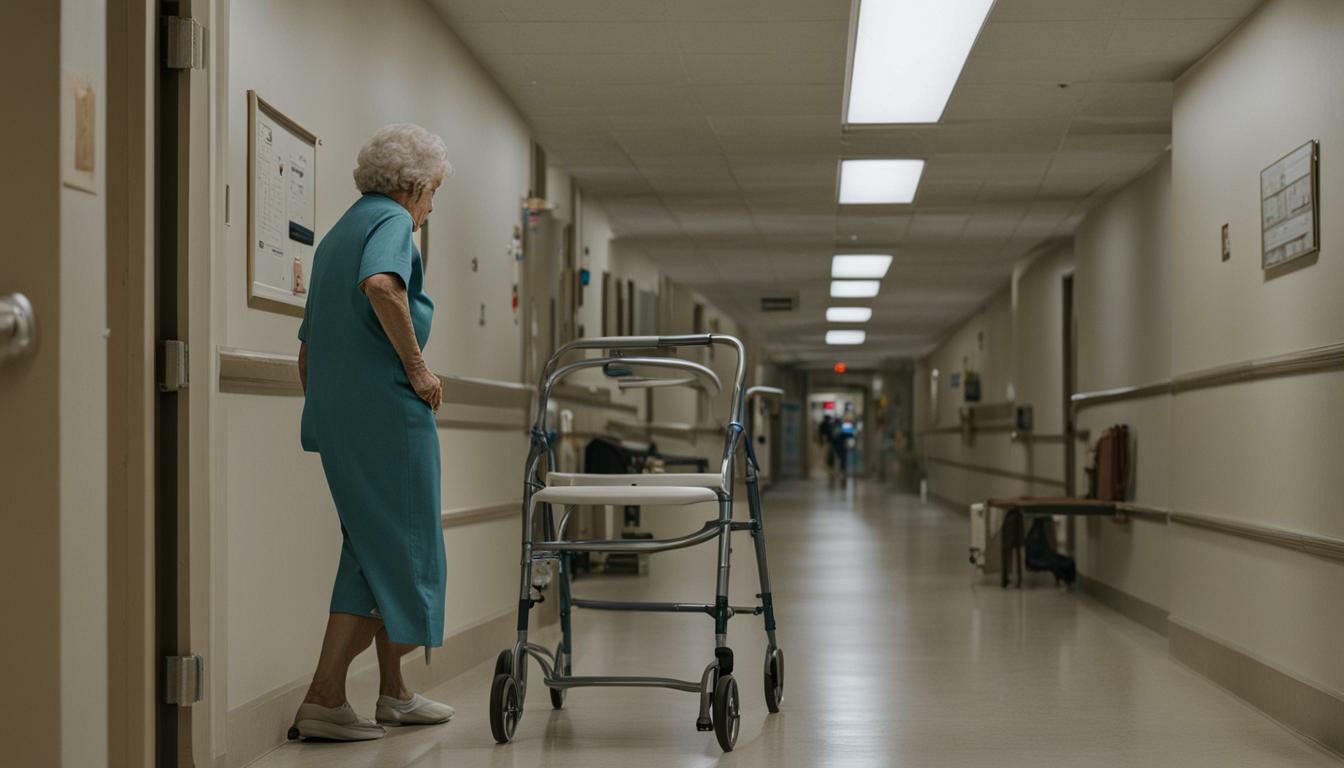
Creating a Personalized First Aid Kit for Seniors
As mentioned earlier, having a first aid kit that is tailored to a senior’s specific needs and medical conditions is crucial. Here is a checklist of items to be included in a senior first aid kit:
- Prescription medications: Ensure an ample supply of all prescribed medications and store them in a labelled container along with instructions for dosage and timing.
- Over-the-counter medications: Pain relievers, antacids, and allergy medicines can be helpful in many situations.
- Medical supplies: Depending on the senior’s medical condition, include medical supplies like blood pressure monitor, glucose test strips, or nebulizers; and any necessary devices such as hearing aids, eyeglasses, or walking aides.
- Wound care items: Adhesive bandages, sterile gauze, and antiseptic solution or wipes should be a part of the kit.
- Emergency supplies: A flashlight, whistle, blanket, and a mobile phone with a fully charged battery are necessary for emergencies.
- Personal documents: Include copies of personal identification, medical insurance cards, and a list of emergency contacts.
It’s recommended to place the first aid kit in a location that is easily accessible and known to the senior, perhaps near the bed or bathroom.
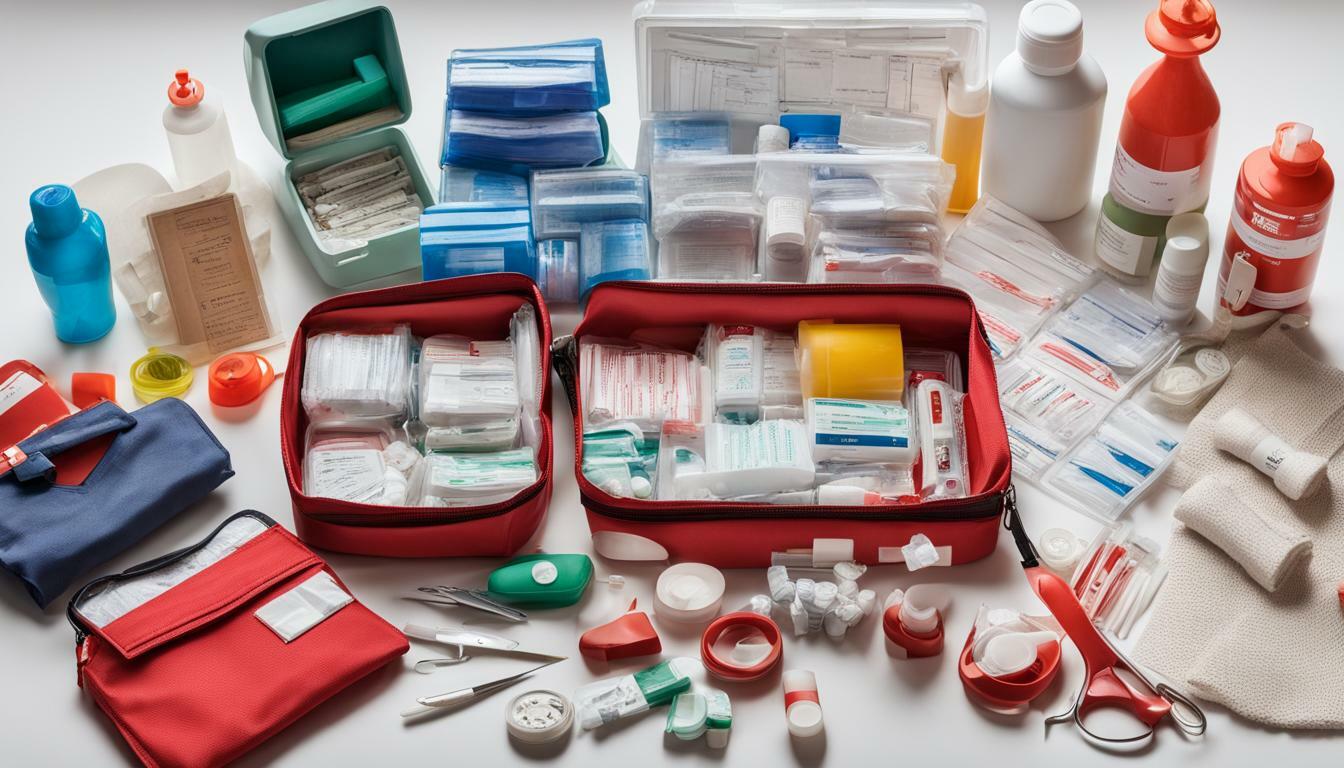
Assembling a personalized first aid kit for seniors may seem overwhelming, but with these essentials by your side, you can ensure their safety and wellbeing in case of emergencies.
Understanding Senior Health Conditions
As seniors age, they become more susceptible to certain health conditions which may require specific first aid supplies. It’s important to familiarize yourself with these conditions, so you can tailor the first aid kit to meet their unique needs. Here are some of the most common health conditions that affect seniors:
| Health Condition | First Aid Supplies |
|---|---|
| Heart Attack | Aspirin, Nitroglycerin, AED |
| Stroke | Fast-acting glucose, Tissue plasminogen activator (tPA) |
| Falls | Ice pack, Bandages, Pain relief medication |
| Burns | Burn ointment, Sterile dressings |
| Hypoglycemia | Fast-acting glucose, Blood glucose monitor |
Other conditions that may require special attention include dementia, Alzheimer’s disease, and Parkinson’s disease. It’s important to consult with a medical professional if a senior in your care has a specific health condition that requires additional consideration.
Equipping yourself with the appropriate first aid supplies and knowledge about senior health conditions will help you respond effectively during medical emergencies and ensure the safety of your loved ones. In the next section, we’ll explore home safety modifications that create a senior-friendly environment to minimize the risk of accidents and injuries.
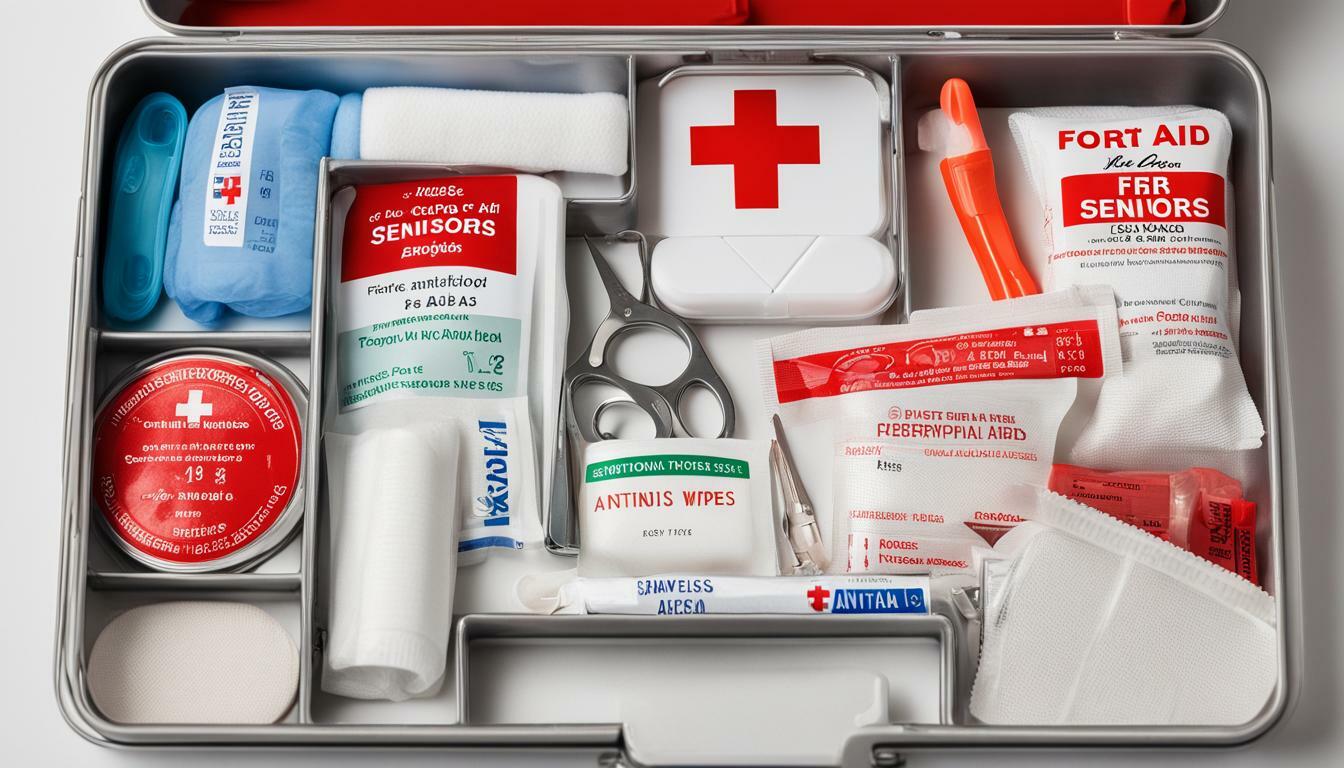
Home Safety Modifications for Senior-Friendly Environments
When it comes to promoting elderly safety, making simple modifications to the home can go a long way. By taking steps to create a senior-friendly environment, we can prevent accidents and improve overall safety. Here are some modifications to consider:
| Modification | Description |
|---|---|
| Install grab bars | Placing grab bars in the bathroom and near the bed can help seniors maintain balance and prevent falls. |
| Improve lighting | Ensuring that rooms are well-lit and installing motion-sensor lights in hallways and stairs can reduce the risk of tripping or falling. |
| Remove clutter | Clearing away unnecessary items from walkways and stairs can prevent tripping hazards. |
| Use non-slip mats | Placing non-slip mats in the bathroom and kitchen can prevent slips and falls on wet surfaces. |
| Install handrails | Installing handrails on both sides of staircases can provide added support and prevent falls. |
These modifications can greatly improve safety in the home and promote peace of mind for both seniors and caregivers. By taking the time to assess and modify the living space, we can ensure that our elderly loved ones are safe and comfortable.

Senior Safety Tips for Everyday Living
As a caregiver, it is crucial to ensure seniors take precautions to prevent accidents and injuries. Here are some senior safety tips for everyday living to promote elderly safety and senior emergency preparedness:
- Prevent falls: Falls are the leading cause of injuries among seniors. Make sure there is adequate lighting in the house and that floors are not cluttered. Handrails and grab bars can be installed in areas where seniors may require support, such as in the bathroom.
- Be cautious when using stairs: Seniors can easily lose their balance when going up or down stairs. Encourage seniors to hold onto handrails and use non-slip treads on steps.
- Keep a well-stocked first aid kit: Ensure that the senior’s first aid kit is stocked with essential items for emergency situations. This includes items like bandages, antiseptic wipes, and medication for any medical conditions.
- Regularly check smoke detectors: Smoke detectors should be installed in every room and checked regularly to ensure they are working correctly.
- Ensure proper medication management: Seniors may require multiple medications, and it can be challenging to manage them all. Ensure that medications are organized and taken correctly.
- Prepare for power outages: Power outages can be dangerous for seniors, especially if they rely on medical equipment or medication that requires refrigeration. Make sure there is an emergency kit with a flashlight, batteries, and a backup power source for medical equipment.
By following these senior safety tips for everyday living and promoting elderly safety, we can create a safer environment for seniors to enjoy their golden years. Remember to always prioritize senior emergency preparedness.
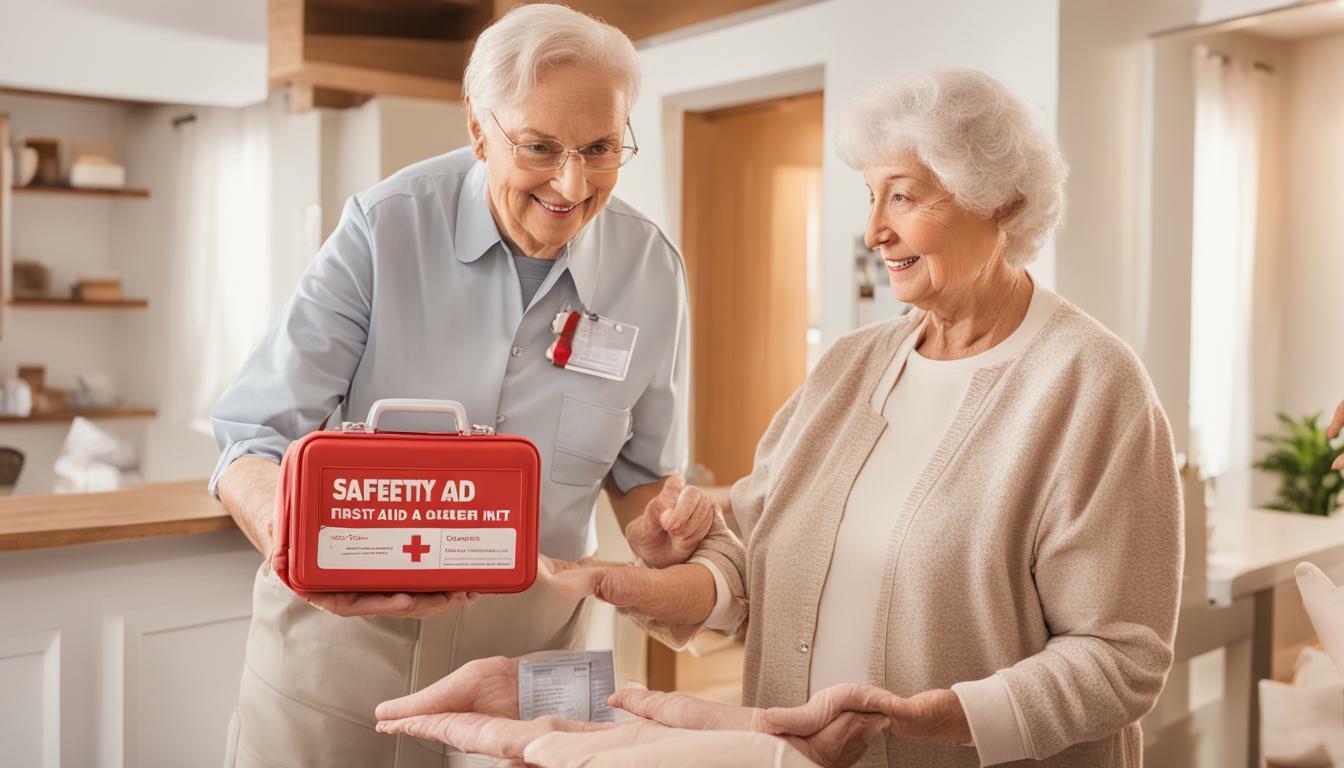
Incorporating Emergency Contacts and Medical Information
Aside from having a well-stocked first aid kit, it’s equally important for seniors to have their emergency contact details and medical information readily available. This will enable emergency responders to quickly and accurately provide the necessary care in the event of an emergency.
Make sure to include the following information in the senior’s first aid kit:
| Information | Details |
|---|---|
| Name | Full name |
| Address | Complete address, including postcode |
| Phone number | Home phone number and mobile number |
| Emergency contact | Name, relationship, and phone number of someone to contact in case of emergency |
| Medical information | List of any medical conditions, allergies, medications, and dosages |
It’s also important to regularly update this information as necessary. Keep a printed and digital copy of this information in a safe place that is easily accessible, such as in the first aid kit and on a smartphone.
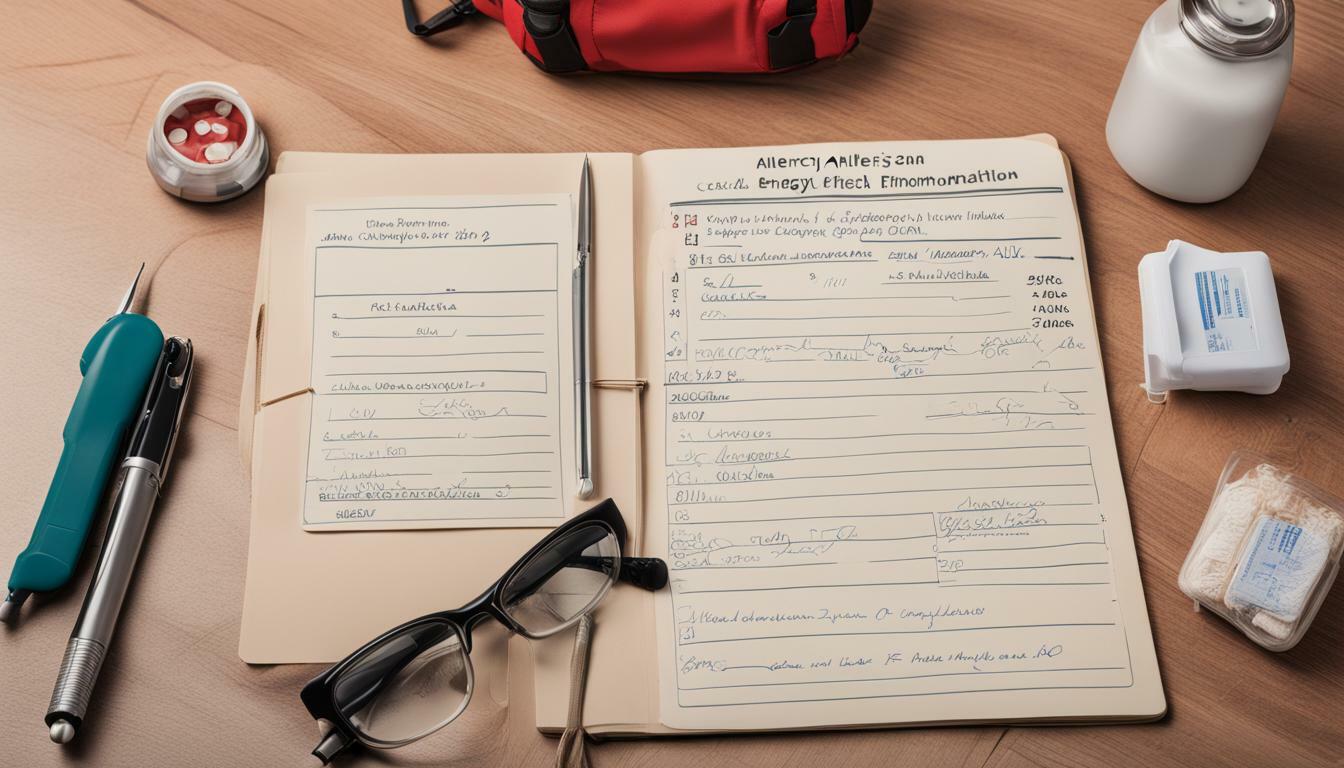
By incorporating emergency contacts and medical information in a senior’s first aid kit, you can ensure that they receive prompt and appropriate medical attention during emergencies. This is a crucial step in promoting elderly safety and senior emergency preparedness.
Staying Informed: First Aid Training for Seniors and Caregivers
First aid training is essential for both seniors and caregivers. Knowing how to handle emergencies can save lives and minimize the risk of further injury. Seniors who can respond to a medical situation can also maintain their independence and avoid over-reliance on caregivers.
There are various first aid training programs available to seniors and caregivers. These programs cover a wide range of topics, including CPR, wound care, and emergency response. Taking these courses can help individuals gain confidence in their ability to provide first aid and effectively respond to emergencies.
It is also important to stay up-to-date on the latest information related to senior safety. This includes being aware of common health conditions, understanding how to modify the living environment for optimal safety, and being familiar with the essential first aid supplies for seniors.
By staying informed and equipping oneself with first aid knowledge and skills, seniors and caregivers can help ensure the safety and wellbeing of elderly individuals. It is never too late to start learning and preparing for potential emergencies.
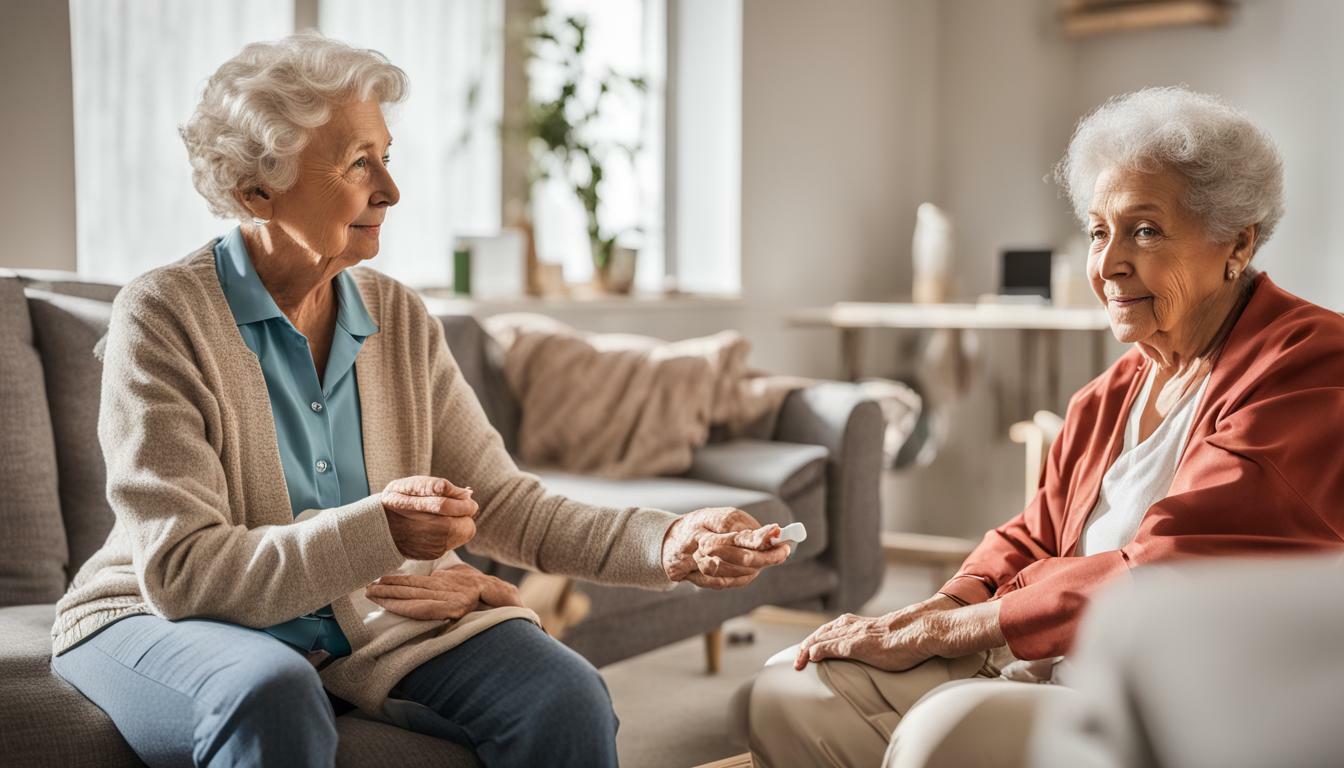
Remember, prevention is always the best strategy for promoting elderly safety. By taking appropriate safety precautions and being prepared for emergencies, we can create a safer and more secure environment for our seniors.
Conclusion
In conclusion, promoting elderly safety should be a top priority for caregivers and family members alike. By ensuring that seniors have the necessary first aid supplies, following appropriate safety precautions, and making necessary home modifications, we can provide a safer environment for our loved ones as they age. Personalized first aid kits that cater to specific health conditions and emergency contacts and medical information can also make a significant difference in emergency situations. Finally, staying informed through first aid training is a crucial step in equipping ourselves with the skills and knowledge to effectively respond to emergencies and protect the wellbeing of our seniors. Let’s make senior safety a priority and give our elders the care and attention they deserve.
